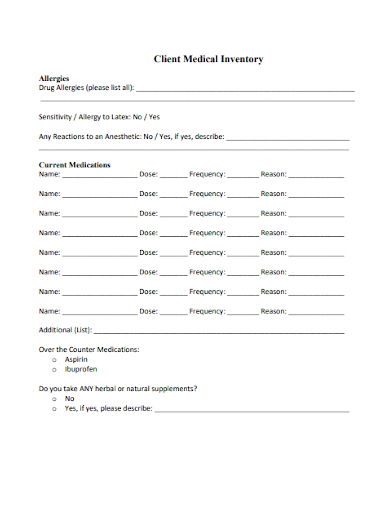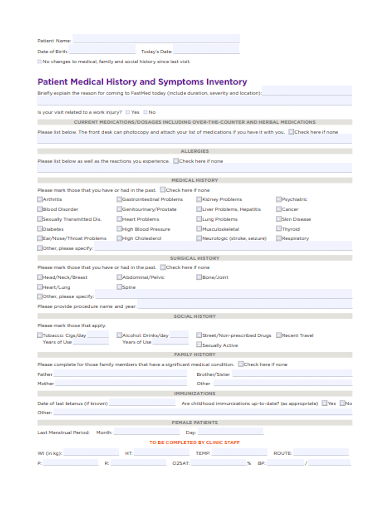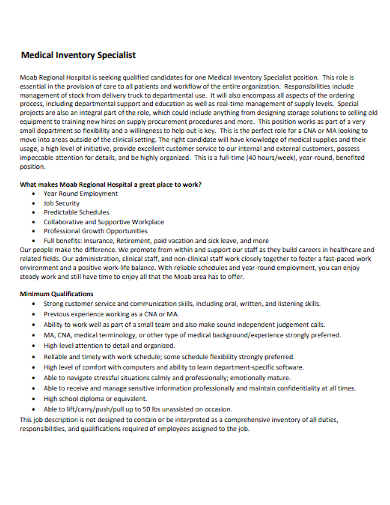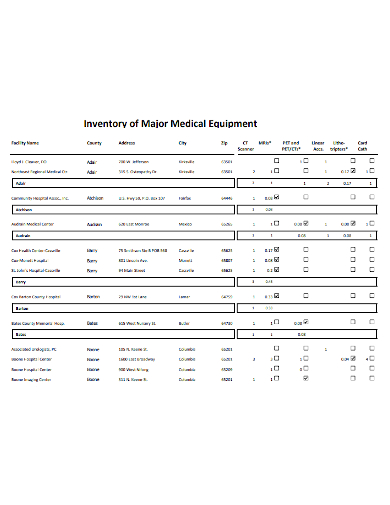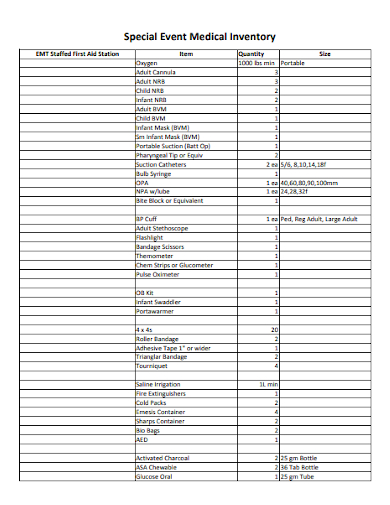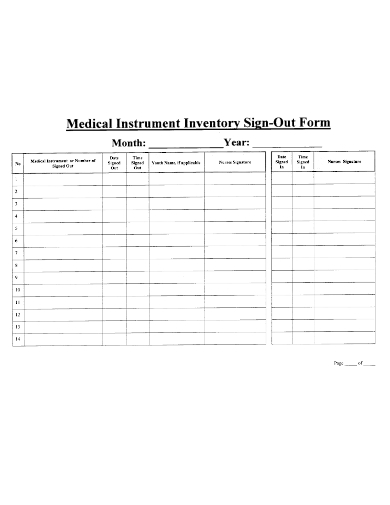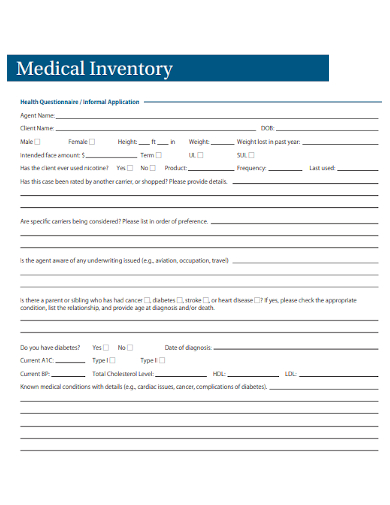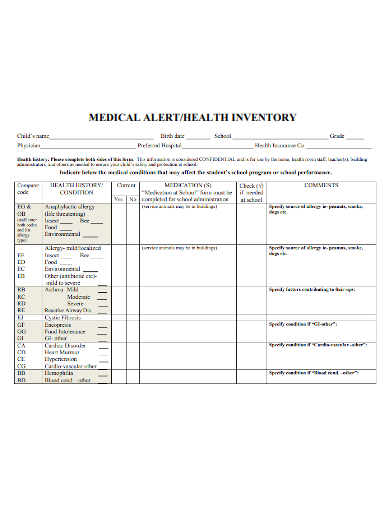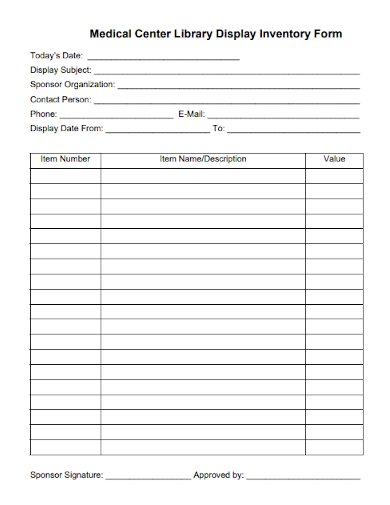Running a hospital or any other healthcare facility is a complex and tedious job as there are a lot of things to consider. From patient care, managing healthcare workers to inventory of medical supplies, products, and equipment. Management must see to it that they have a steady supply of medical items and products and that every piece of equipment is in good working condition. Managing a medical inventory can be difficult and time-consuming, but it is one of the most important aspects needed to successfully run a healthcare facility. Having the right supply of medical products and working equipment will save lives and also reduce the cost of unused or expired products. To know more about this, let us discuss this further below. If you need any help preparing this particular inventory, we’ve got a list of medical inventory samples that are downloadable for free on this page, so don’t forget to check it out!
10+ Medical Inventory Samples
1. Medical Supply Inventory Template

2. Client Medical Inventory
3. Patient Medical History and Symptoms Inventory
4. Medical Inventory Specialist
5. Inventory of Major Medical Equipment
6. Special Event Medical Inventory
7. Medical Inventory Tracking Solution
8. Medical Instrument Inventory Sign-Out Form
9. Sample Medical Inventory
10. Medical Alert & Health Inventory
11. Medical Center Library Display Inventory Form
What Is a Medical Inventory?
A healthcare facility offers medical services to its patients by administrating drugs and performing check-ups with the use of various equipment. To be able to properly assist patients isn’t all about the services, but the availability of the medical supplies and equipment. Without a proper medical inventory, facilities may lose sight of their supplies and fail to check if any equipment that needs to be upgraded or changed. If you will be able to organize your medical inventory then you’ll be able to maintain an accurate record of which drugs are in stock and which have been dispensed. Facilities must be able to set up effective medical inventory management that does not only handle the procurement of medical supplies and products it must also be designed for the rigorous tracking of medical devices and controlled substances which ensures the safety of the staff and their patients. The primary goal of an efficient medical inventory in healthcare should be providing safe and appropriate care to patients.
How To Effectively Manage a Medical Inventory?
There are several healthcare facilities that need to properly manage their medical inventories such as hospitals, clinics, pharmacies, hospice centers, and independent practices. And this would pose a number of benefits such as facilities are able to better manage their budgets since medical products and supplies can be quite costly so with proper inventory, you can accommodate price increases and decreases in your budget. If a medication is too expensive to regularly purchase, you can start looking for cheaper generics in order to keep your costs down. Or you are able to keep track of medical products and drugs and check their expiration or gain better control as to who is allowed access to certain drugs and who has an active prescription. So, how do you effectively manage a medical inventory? Here are several tips we can offer that may help you.
I. Pick the Right Inventory Tool
Each facility has its own individual way of tracking and managing its medical inventories. There are several options out there, such as using a spreadsheet or using the right software package. A good system should be scalable and let you monitor and manage your entire practice across multiple locations.
II. Meeting the Demand
You have to make sure that the inventory meets the demand for patient treatment, so it is important that management is aware of what are the different needs and demands of their patients. This will give them an idea of how many drugs they may need, or what medical equipment is valuable and always in use.
III. Set Up a Schedule
Checking on inventories is not a one-time thing, nor can you just decide to do it weekly or monthly. Since we are talking about medical supplies, depending on the specific drug or equipment for that matter you must be able to set a fitting schedule to check your medical inventory. This would mean initially segregating each item, product, and equipment and with the use of software or spreadsheet to determine which of the products need to be organized daily, weekly, or on a monthly basis.
IV. Managing the Purchases and Deliveries
Hospitals, clinics. pharmacies and hospice centers would need to make their purchases from their suppliers so there must be a certain procedure on how to control purchases. Such as ordering the right medicine quantity and specific brand, or ensuring that medical materials such as dextrose and syringe are regularly ordered to meet the demand. Also, there is a need to also make sure that deliveries made from suppliers are complete and without defects. Systematic inventory management should be able to track and control items, and also help you know when it’s time to re-order.
V. Updating the Inventory
The latest inventory software may have features that can automatically update inventories such as a POS(point of sale) used for food inventories. There might be some data or issues an inventory software is unable to do so it is still important to also check the inventories manually to ensure you are able to reconcile and update each item accurately.
FAQs
What are Examples of Medical Supplies?
Medical supplies have been identified as one of the largest expenditures in most healthcare organizations’ budgets. Common examples of medical supplies used by facilities are start kits, dressing trays, supplies used to treat lacerations such as needles, gauzes, syringes, supplies used to diagnose like stethoscopes and thermometers, and many others.
What are the Four Types of Inventories?
The four types of inventories are raw materials/components, WIP, finished goods, and MRO–which comprises the consumable materials, equipment, and supplies needed for maintenance, repair, and operations activities.
How Important is Inventory Management?
The importance of inventory management for a business is that companies are able to organize and manage their supplies and stock effectively. It tracks inventory from purchase to the sale of goods. The practice identifies and responds to trends to ensure there’s always enough stock to fulfill customer orders and alerts if there is a shortage.
The main purpose and goal of a healthcare facility is to provide the best health care and treatment to its patient. With proper medical inventory management in place, they are able to successfully run their facility and attend to every patient’s needs and requirements.
Related Posts
Sample Meeting Minutes Templates
Presentation Speech Samples & Templates
Ukulele Chord Chart Samples & Templates
Retirement Speech Samples & Templates
Weekly Schedule Samples & Templates
Contractual Agreement Samples & Templates
FREE 9+ Amazing Sample Church Bulletin Templates in PSD | PDF
Sample Business Card Templates
Sample Cashier Job Descriptions
Questionnaire Samples
FREE 10+ Sample HR Resource Templates in PDF
FREE 10+ HR Consulting Business Plan Samples in MS Word | Google Docs | Pages | PDF
FREE 49+ Sample Job Descriptions in PDF | MS Word
FREE 13+ Academic Calendar Templates in Google Docs | MS Word | Pages | PDF
FREE 10+ How to Create an Executive Summary Samples in Google Docs | MS Word | Pages | PDF

